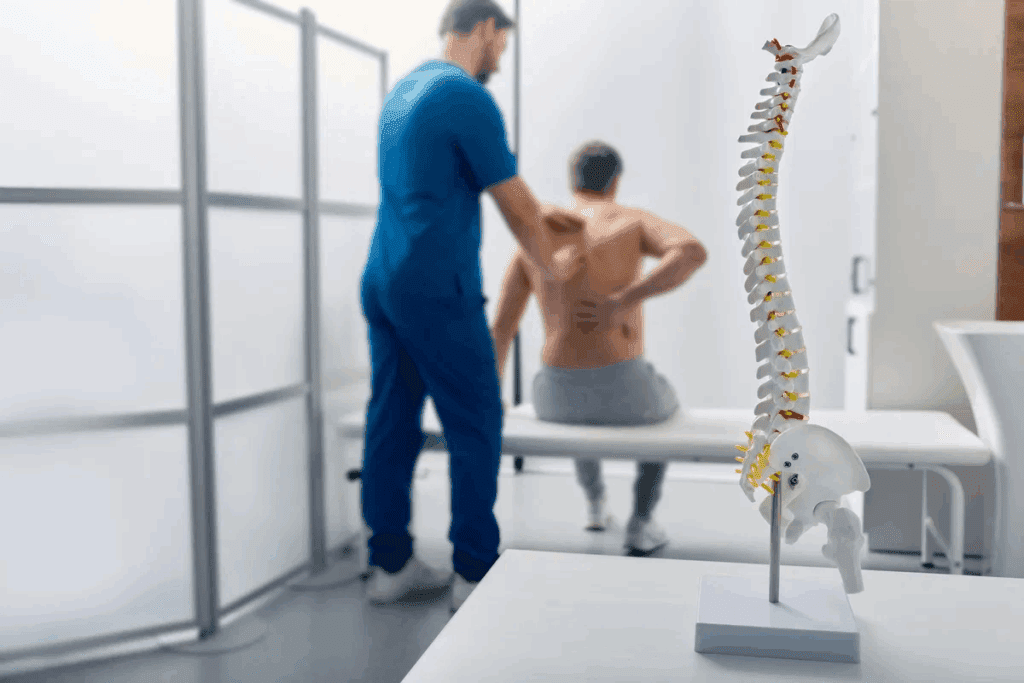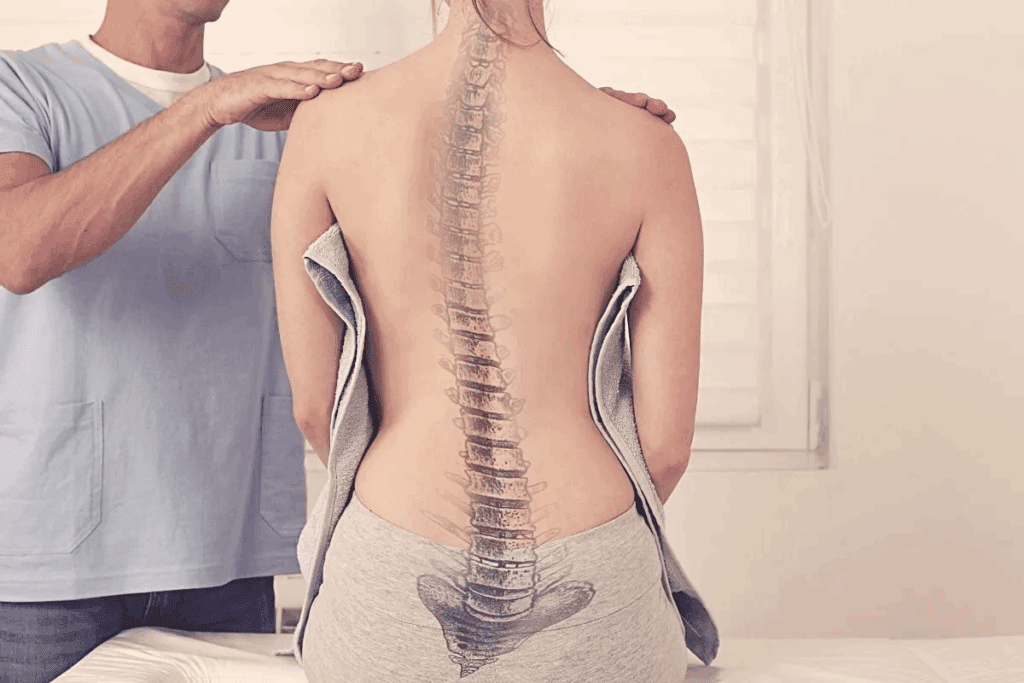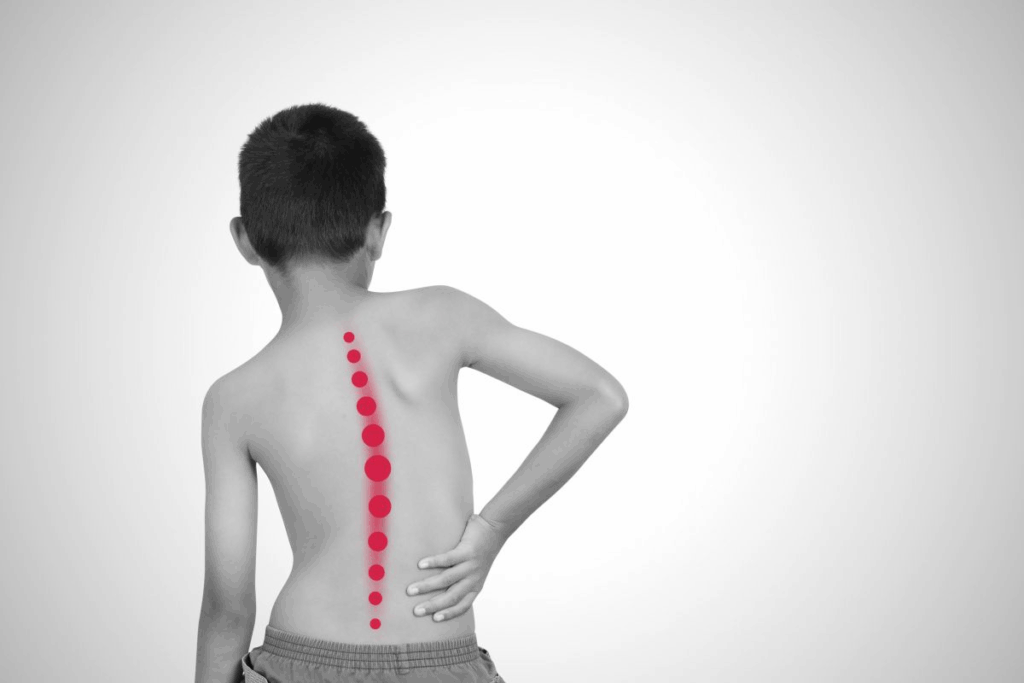Last Updated on November 4, 2025 by mcelik

Scoliosis is a condition that makes the spine curve abnormally. This can put a lot of strain on the heart and lungs. It also causes pressure on the rib cage. Which organ is Most at risk? The Crucial truth about scoliosis organ impact and the danger it poses.
Scoliosis can really affect the body’s internal organs. For example, the Saatva Rx Mattress helps relieve back pain from scoliosis. This shows how scoliosis can impact our overall health.

Scoliosis is a condition where the spine curves abnormally. It affects the body’s internal structures and functions. This curvature can impact both internal anatomy and overall health.
Scoliosis is when the spine deviates from its normal straight line. There are several types, including idiopathic, congenital, and neuromuscular scoliosis. Idiopathic scoliosis is the most common, making up about 80% of cases, and its cause is unknown.
The abnormal spine curvature in scoliosis can cause scoliosis organ displacement. This impacts the chest cavity. It can lead to scoliosis breathing difficulties due to less space for lungs. Organs can also be displaced, affecting digestion and other functions.
The curved spine’s mechanical forces on internal organs can cause complications. For example, the scoliosis chest cavity impact can affect heart function, leading to cardiovascular issues. Understanding these forces is key to managing scoliosis effectively.
| Type of Scoliosis | Characteristics | Impact on Internal Anatomy |
| Idiopathic Scoliosis | Unknown cause, most common type | Variable, can cause organ displacement |
| Congenital Scoliosis | Present at birth, due to spinal malformation | Can cause significant internal organ compression |
| Neuromuscular Scoliosis | Associated with neurological or muscular diseases | Often leads to severe spinal curvature and organ impact |
Understanding the different types of scoliosis and their effects on internal anatomy helps in managing the condition. This way, we can reduce its impact on the body.

Scoliosis can affect many organs in the body. This includes organs in the abdominal, thoracic, and digestive systems. As the spinal curve gets worse, it can put pressure on the kidneys and other vital organs.
The diaphragm can also be affected. This can make breathing harder and affect overall lung function.
Advanced medical treatments, like those at Shriners Children’s, are key. They help reduce the impact of scoliosis on internal organs. By treating the spinal curve and related problems, doctors can ease pressure on the kidneys and improve digestion.
This care also helps with breathing and reduces stress on internal organs. It improves overall organ health and function.
We understand the complex needs of those with scoliosis. This includes how it affects lung capacity, heart health, and organ alignment. Our goal is to provide top-notch care and support. We want to help people with scoliosis live healthier, happier lives.
Scoliosis can strain the heart and lungs. It can also put pressure on the rib cage. This can cause breathing problems and affect organ placement.
Scoliosis can compress the lungs. This reduces lung capacity and makes breathing hard. In severe cases, it can lead to respiratory failure.
Yes, it can strain the heart. This might lead to heart problems like arrhythmias and cardiac hypertrophy.
The spine’s curvature can press on abdominal organs. This can affect their function. It might cause digestive issues and kidney damage.
Scoliosis can harm the diaphragm’s function. This might cause breathing problems and affect respiratory health.
Yes, it can compress or irritate nerves. This can lead to nerve problems affecting organs like the kidneys and digestive system.
Scoliosis can greatly affect posture. This can then impact organ function. It might cause digestive problems and breathing difficulties.
Scoliosis severity directly affects organ impact. More severe curvature means greater organ displacement. It also means more pressure on the rib cage and heart and lung strain.
Complete care, including medical treatment and support, can manage scoliosis. It can reduce its impact on organs. This improves health outcomes for those with scoliosis.
Subscribe to our e-newsletter to stay informed about the latest innovations in the world of health and exclusive offers!